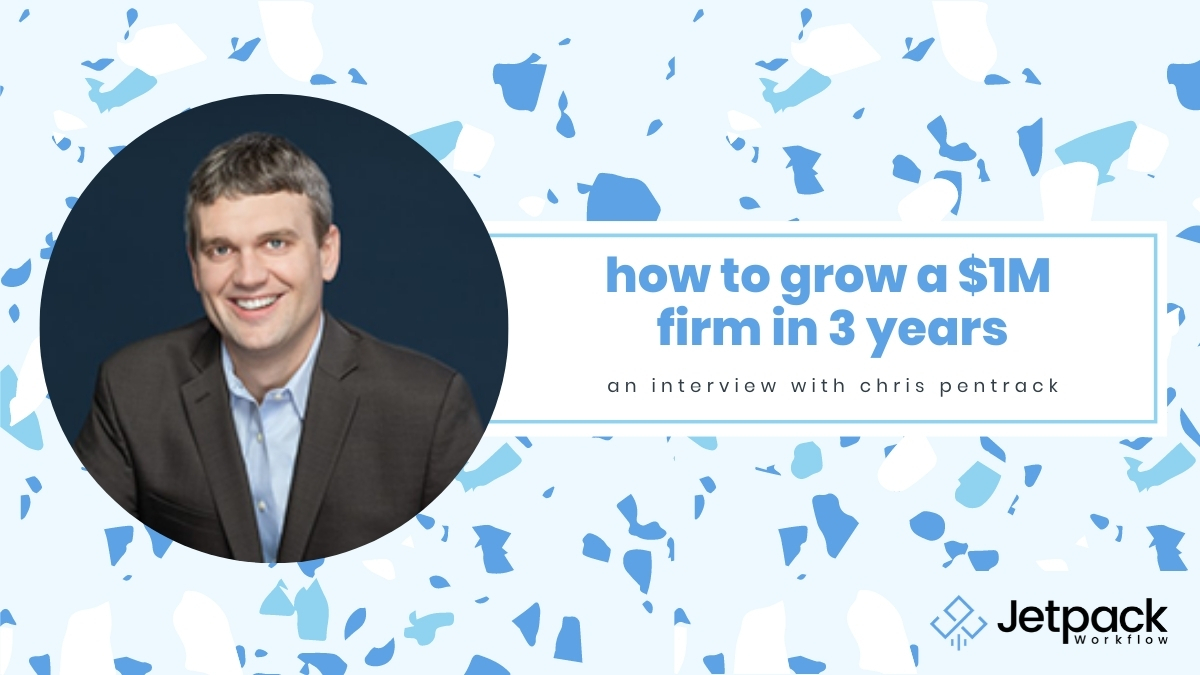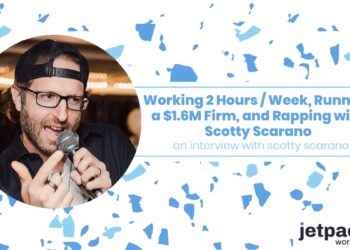How to Grow a $1M Firm in 3 Years

On this week’s Growing Your Firm podcast, we are speaking with Chris Pentrack. He’s the owner and managing director at Supporting Strategies, a firm that’s just right up the road from our main offices here in Pittsburgh.
Chris is an award-winning entrepreneur and finance executive with over a decade of experience leading businesses to financial success. He grew his firm to $1M in 3 years and surpassed corporate growth predictions by 40% one of those years! That’s an astounding growth rate for a new company.
We had to bring him in to learn about how he built his firm. One of the strategies he uses may be the key you need to bring your firm to the next level. Take a listen or read our summary below for the details, training, and approach he used to grow his firm so quickly.
Podcast
Summary
- About Supporting Strategies
- Team Structure
- Hiring Philosophy
- Client Acquisition
- Networking
Resources
How Did Chris Grow His Firm So Quickly?
Supporting Strategies is an outsource bookkeeping firm that does everything from daily transactional bookkeeping up to controllership services, but not tax services. They work with small businesses between the $1M-$20M range. They are also active in the startup community in Pittsburgh.
One of their labor goals is to employ people from anywhere in the country to virtually create their office. They have a team of 12 people right now. Hiring home workers lets the company bring in top talent who want a flexible schedule, the ability to work with several clients, and have the clients come to them rather than the other way around.
This lets Chris focus on business development while his team focuses on delivering the requested services. Chris also uses workflows and automation technology to streamline the company as much as possible.
How Are the Teams Structured?
The current goal is to complete three teams. At the head of each team is a Financial Operations Manager (FOM). They have 4-6 Financial Operations Associates (FOA) under them. Each team oversees $600,000 worth of revenue.
Part of the reason for this split structure is that the firm learned early on that they can only onboard two average-sized clients a month. When a client is onboarded, the FOM is responsible for that process, which takes about 60 days, before handing them off to an FOA. The FOM is the main point of contact during onboarding, but once the FOA takes over around 80% of the work, then they become the contact. Each client is assigned to a single FOA after onboarding unless they are large enough to need the services of two. If that’s the case, each FOA gets different duties.
During the onboarding process, the FOM’s responsibility is to drive the technology and automation piece of engagement. When the FOA takes over, they use that structure to deliver the service while the FOM reviews and guides the associate to ensure quality.
Another benefit of this setup is that if an FOA needs to take a vacation, the processes and automation set up in advance will help any of the other FOAs to slip in and take over that client until they come back.
Balancing Capacity With Clients
A common pattern with a growing firm is that an owner will wait until they’re burned out before hiring new workers and stay burned out until the new worker gets up to speed. How do you get the confidence to hire ahead and know there will be enough work to justify the hire?
Chris did this well by hiring all of his employees as part-time workers. They all work a maximum of 30 hours per week. They are all paid handsomely by the hour, but it is strictly an hourly job. By doing this, the employees can ramp up to the work slower than a typical employee. As more work comes in, the hours can increase.
Chris would much rather have the talent in reserve and spend his time finding new work for them rather than trying to keep a client happy while things fall apart behind the scenes. He feels fortunate that he has had no turnover for the last 18 months.
How to Do More of What You’re Good At
Chris is the person responsible for bringing in new work to the company. He spends 70% of his time on business development and 30% on admin work. He focuses on admin work on Mondays and Fridays and spends the rest of his time on business development.
On Mondays, he has a meeting with his three managers using the Level 10 meeting system, part of the Entrepreneurial Operating System, or EOS. Part of the EOS involves focusing on core metrics of your business. The three metrics Chris focuses on are margins, overdue tasks, and unread client messages. They evaluate each metric by team, associate, and client. He also uses this time to discuss how onboarding is coming along for new clients.
To help him get used to business development, networking, and sales, he turned to Sandler Training. The stereotypical introverted accountant may dislike working on this side of the business. Instead, they might focus more on operations. Both are necessary for growing your firm. Sandler Training is a refreshing sales training that is methodical and analytical, perfect for people with an accounting mind.
When you listen to the full podcast, you’ll hear our conversation about how to maintain client experience at scale, Chris’ approach to management, and how he sees his progression as a business leader. Take out your pen and journal, and take some notes!
If you have questions you’d like to ask Chris, he has kindly offered his email, cpentrack@supportingstrategies.com. Don’t hesitate to reach out to him!





